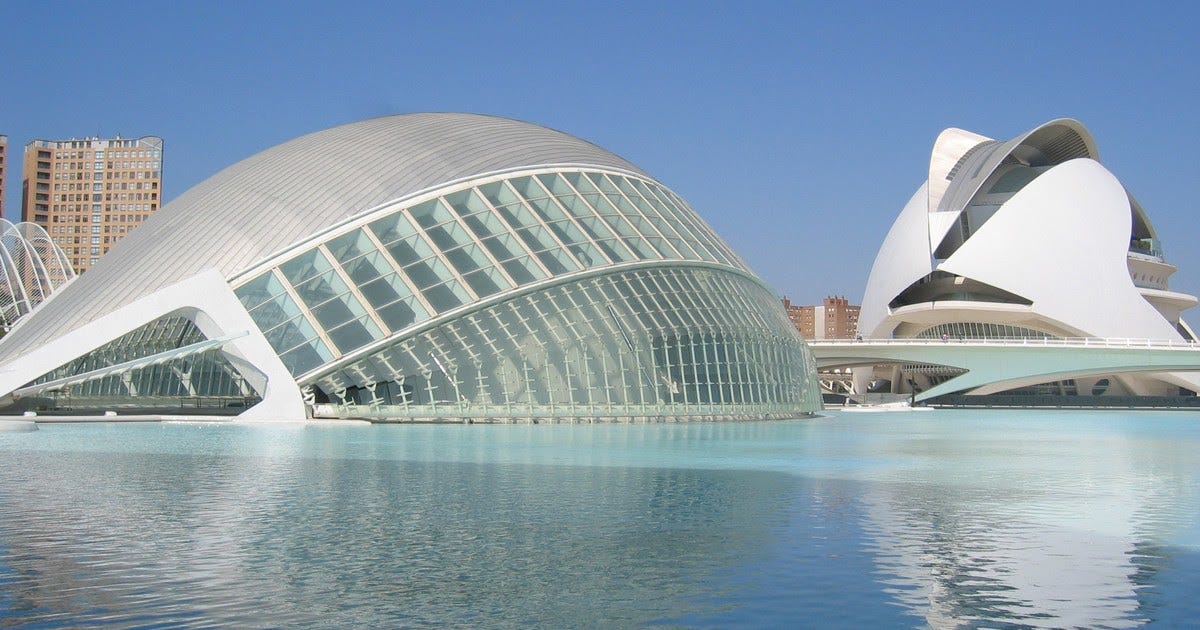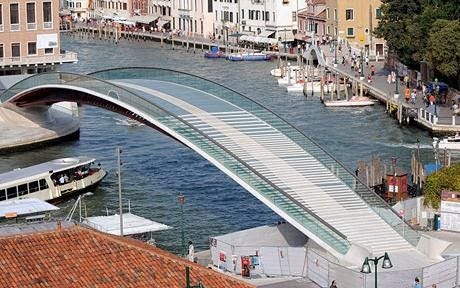All the small things
On the bad architecture I used to love and big ideas in the time of shrinking worlds.
One thing I reference occasionally around here is the fact that I attended architecture school. This is an important biographical detail in my life, partly because I’m an architect and they do require you to go to architecture school for that, but mostly because it illustrates that I’ve always had moderately good intentions and relatively poor judgement about what to do about them.
There are a lot of useful things one can learn in architecture school. Things like “how long can I physically stay awake before my body shuts down?”, “which X-Acto blade injuries can’t be sealed with glue and require an emergency room visit?”, and “should I have gone to business school instead?” For the record, my personal answers were: 89 hours, some of them, and yes, if I’d wanted to enjoy college and eventually retire.
One thing it’s not great about teaching is perspective. Like most 18-year-olds prepossessed of their own self-diagnosed brilliance, I had no interest in learning about small things. I wanted grand ideas. Big concepts. Earth-changing, society-defining ideas. My favorite architect at this time was the Spanish sculpturalist Santiago Calatrava — a designer known for stark, airy, white structures that call to mind forms from nature, whale skeletons or birds taking flight, structures that also have a nagging tendency to be functionally preposterous and six times over budget.

His City of Arts and Sciences project in his hometown of Valencia managed to nearly bankrupt the city while casually omitting elevators for accessibility. An arching footbridge over a Venetian canal was paved with smooth glass tiles and many steps, making it dangerously slip-prone for ambulatory users and, again, completely inaccessible for non-ambulatory users. More recently, the Port Authority of New York and New Jersey hired Calatrava to build a $4B transit terminal that added no actual transit capacity — a soaring, magnificent roof over existing infrastructure, a roof that still occasionally leaks. (As they say: you had one job.)
Nevertheless.
The projects thought big, and big ideas were good. That’s what I thought. I wanted to create things like that. I wanted to change the world.
In one early undergraduate studio, we were assigned to read the 1977 book A Pattern Language, a self-described “working document” for an architecture “driven by laypeople.” The book eschews the high concepts and theories of Big Design and instead offers 253 different “patterns” for small-scale problems, things like “A Place To Wait”, “Windows Overlooking Life”, and “Front Door Bench”. All of the thick, Bible-like book’s prescriptions are made in the same pure, unconscious earnest of a recipe site working to convince you that this lentil burger tastes better than beef. Of course, I found it to be impossibly corny, a relic of a Whole Earth Catalog mindset, of aging hippies building adobe shelters off the grid in the desert, and I dismissed it outright. Little details aren’t important, I thought. Those can be figured out later.
I found myself thinking about that book for the first time in years this weekend as I sat in my car by the side door of a supermarket, waiting for groceries to be brought out to me by a person with whom I would not physically interact. There was a long wait, as the store was not designed with this level of demand in mind, and I considered how dramatically the world has changed — and shrunk — for many of us recently.
This grocery trip marked the first time I’d left my neighborhood in weeks. A twenty-five minute commute to a downtown office has been replaced by a morning shuffle from one room to another; a moderately-sized city has been replaced by a few quiet streets. The little things matter, and little things are driving us mad. I’m glad there are windows in the rooms we work in; I wish there were doors. (My kids scream a lot.) We have a quickly-growing catalog of things we want to fix or replace in the house, things we were able to ignore when the house didn’t represent our whole functional world.
(I should speak for myself here, actually; my wife has always hated that dining room light fixture, and I’m only now coming to notice it and realize she is right. This dynamic is not uncommon for us.)
It’s not just our homes, though. Only worrying about the biggest picture is a luxury afforded to people for whom the small things have always worked. A day-to-day world that felt seamless and functional to some of us suddenly isn’t, and now everything suddenly feels like a fraught consideration. How will I get to the store? Who will I need to interact with? How will I move through public space? How will it impact me, and how will I impact others?
How am I going to make this all work?
I have the same dreams many people do about the eventual end of [concerned corporation voice] These Difficult Times We Are In, and what I’ll do when they do. I want to dine in at a crowded restaurant. I want to sit in the sun at a ballgame. I want to be in a crowd. I want to go to another country, another state, another city. I want to be literally anywhere else than here.
What I don’t want to do, though, is give up the chance to reassess the small scale of my daily life. Should I have gone into the grocery store wearing a mask, so I could free up the curbside slot for someone who needs it more? Should I have made the trip at all? Should I find a way to make things last longer, go farther, to not need them as much? Should I structure my day, my week, my life differently?
Should I consider what it is that I’m doing here, and how it impacts others?
Big picture thinking still has a place in our new reality; grand visions can change the world for the better in the right hands. The small details matter, though — the details of how a store is designed, how a city is put together, how our physical and social structures move us around, how people in a society consider one another’s existence and decide to take care of each other or not.
The world has always been like this, but some of us were lucky enough to not notice.
A bridge isn’t beautiful when it can’t be crossed by everyone.

Look at this dumbass bridge.
— Scott Hines (@actioncookbook)



March 13 was the last Friday before Ohio went shelter in place... I took the day off work to have new countertops installed.
Since then we've painted four rooms, replaced four light fixtures, painted the kitchen cabinets and replaced all the hardware, turned the basement into a work shop (work bench, tool cabinet, wall mounted cabinets & shelves), added crown molding to a bedroom, replaced the furniture in two rooms, and we're still finding stuff to do... next up is ceiling painting & repainting concrete floor in the basement. Haven't even tackled anything outside yet.
Every day we find one more little thing that's not bad.. just sort of "could be better".
I'm very excited for the world to open back up and things can go back to "good enough" around the house.